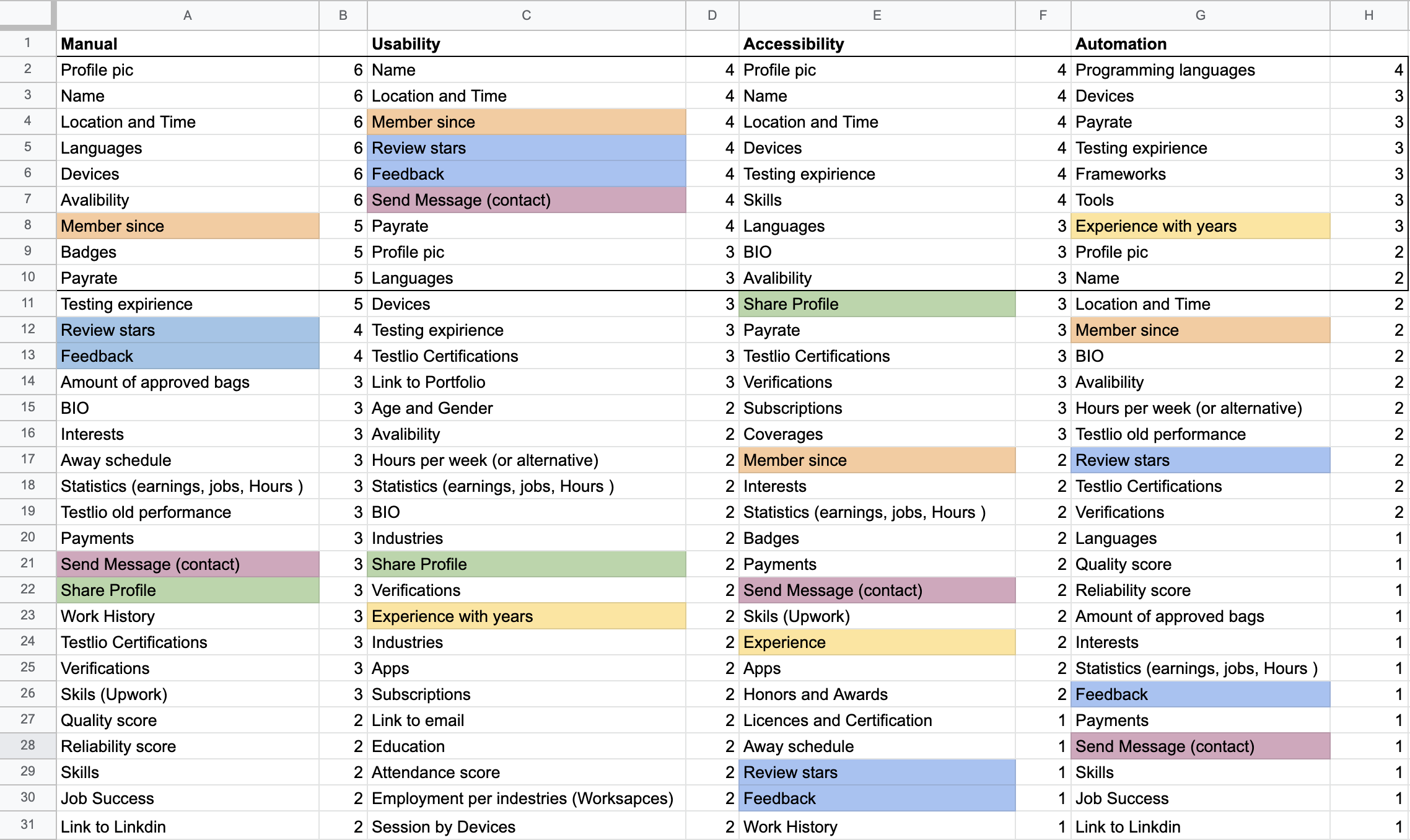

When the first freelancer's profile was created, the company only offered manual testing services. However, a lot has changed since then. The company expanded its offerings to include various specializations within the Freelance network, as well as testing services for clients. As a result, the existing profile became outdated for tasks beyond manual testing. Therefore, a redesign was necessary. Below, you can see what the original freelancer profile looked like:
Suitable freelancers are hard to find because their profiles are missing data. There needs to be more than the showcased information for hiring Testers.
If we provide relevant information in the profile, the Coordinator can assign the right Freelancers to the right Workspaces quicker and have better quality testing.
Puzzle exercise. In this method, I combined card sorting and crazy eight technics. It will allow me to see what users need in terms of data plus user perception of the hierarchy of data information.
18 consumers of the Freelancer's profiles need to look for different testing roles to meet the client testing requirements.
Miro. Users puzzled together the profile based on the assigned specialisation.

Samples of what users have created during the study
I collected all data points each participant used in their profile and grouped them by each profile type. It allowed me to conduct the cross-analysis to see the dependency and build the whole picture.

By creating the data schema, it was possible to categorize the information and determine the number of data points that can potentially be shown per each group.
It is a helpful tool for identifying common and specific information that is unique to various specialized profiles.
From the research I have done, I identified design principles and assumptions.
Design principles
Assumptions
I paired with Jillian Heller to run a usability study.
Hypothesis: With this newly designed freelance tester profile, the users will have increased comprehension of the tester details, allow for information to be more quickly discovered, and build trust in the Tester's quality.
Method: Moderated design test + Post-test surveys via google forms + Card sort on trustworthiness discovery
Results: Sections with the biggest opportunities for improvement - Work Time Preferences + Payment Testing + Manual Performance Metrics
📊 Quick Insights
After revising the research findings I worked on design improvements. Final design prototype you can fnd bellow.